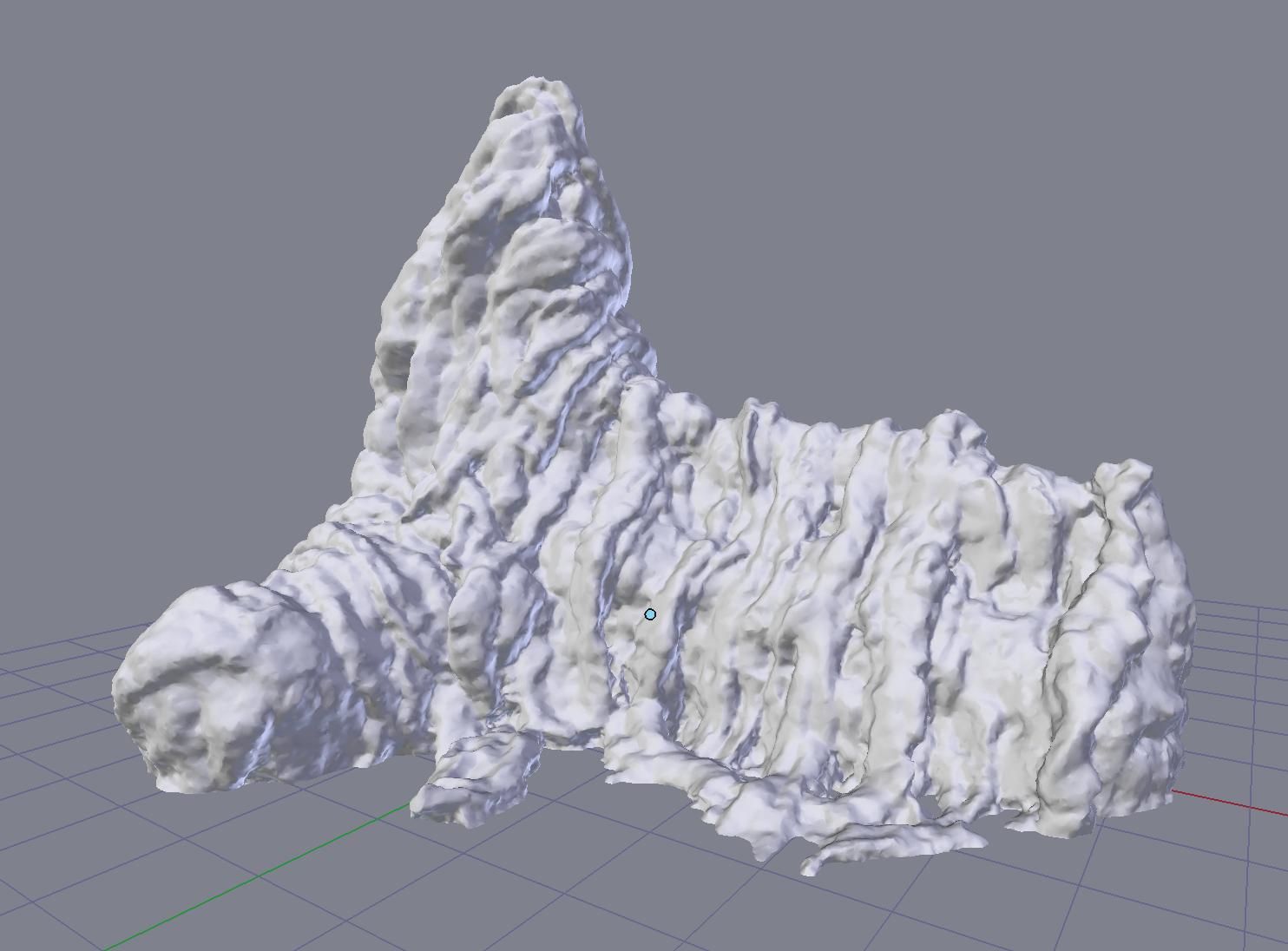I am working with a 3D scan of an object that has convex ridges. Here is a screenshot of the object:
I am trying to use the interior of the model to create a space for a video game. As you can see in this image, the ridges of the model are concave when viewing the interior of the model:
If you imagine flipping a sock inside out, that's what I'm trying to do with this model. Is there a way to flip the model inside out so that the ridges are convex, rather than concave, when viewing the model from the inside? To be clear, I am not talking about flipping normals: if you were to do what I am imagining with a model of a human head, when viewing the interior of the head the nose would be pointing inside.
I already tried to do this with a cloth simulation and a collider around the bottom edge of the model, but that ended up smoothing out the ridges I am trying to preserve.
Thank you, and let me know if I can clarify anything.
EDIT: This is what the flipped mesh looks like following cmomoney's suggestion:



